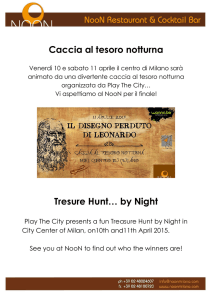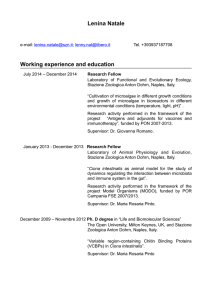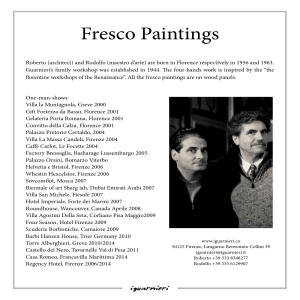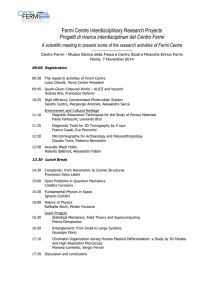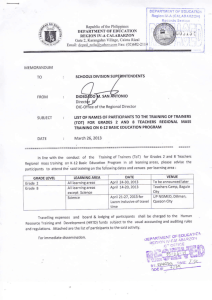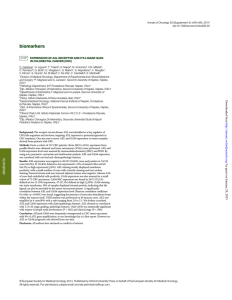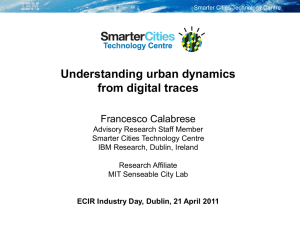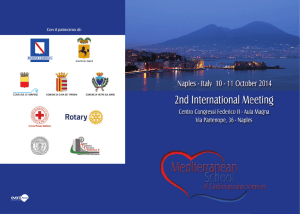ICHL 2015 Naples - ICHL22 - Università degli Studi di Napoli
advertisement
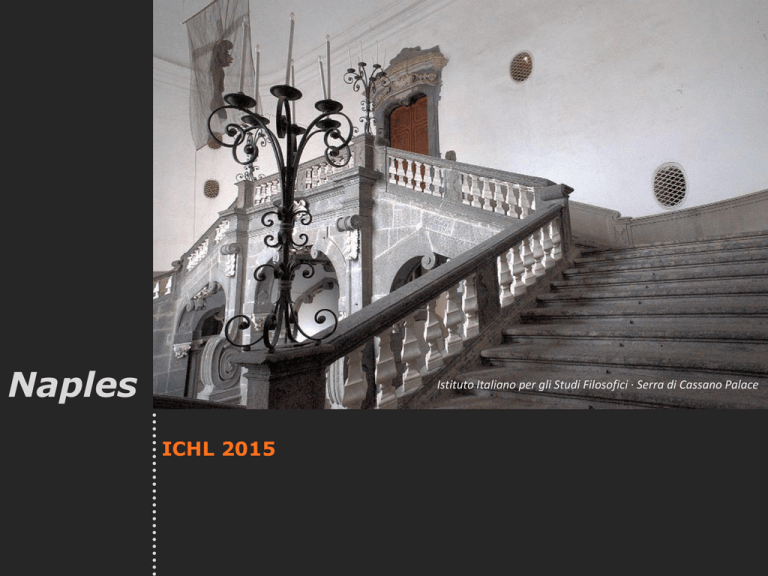
Naples Istituto Italiano per gli Studi Filosofici · Serra di Cassano Palace ICHL 2015 The University of Naples Federico II is one of the oldest Italian Universities (after Bologna and Padua), and the first public University in Europe, established in 1224 by Frederick II Hohenstaufen, King of Sicily and Holy Roman Emperor • The University has long-standing and solid international links, spanning from Europe to the Americas, Asia and Africa, with leading research projects and international PhD programmes in various fields of the Humanities (e.g., Classical and Modern Philology, Economics and Law) and Science (e.g., Engineering, Genetics and Molecular Biology). • Nowadays the University offers courses in all academic disciplines, leading to one hundred and fifty-five graduate level degrees, with 94.510 students, which makes it the biggest University in Southern Italy, with 108 libraries spread over the various Faculties, with online consultation and numerous other facilities. Linguistics in Naples A large, lively, close-knit linguistic community spread over 2 main institutions Università degli Studi di Napoli Federico II Department of (Arts &) Humanities, with a long tradition and well-established reputation in Philology, Historical Linguistics, Dialectology & Typology, mainly focused on Romance and Germanic Università degli Studi di Napoli L'Orientale The Oriental University (formerly School of Oriental and African languages) with a strong tradition of studies in African, Japanese/ Chinese, Slavic & Indo-Aryan Linguistics and Philology as well as endangered languages of the Americas, especially Meso-America • The University Campus, its facilities and the University Conference Centre(s) • There are three major campuses, located in the historical centre and its Northern and Western outskirts. The Department of (Arts &) Humanities is in the historical centre of the city, near the Faculty of Law, the Senate House and the main administrative offices. • The University has several Conference Centres, located in different areas of the centre of the city and in the islands (Capri - Villa Orlandi and Procida - Collegio delle Orsoline). The main University Conference Centre, where major Conferences are hosted, is on the seafront (Via Partenope) (see website at http://www.centrocongressi.unina.it/). l Conference centres are well equipped with all the highest level audio-visual chnology and support facilities (e.g., Overhead Projector & Screen, Flipchart,TV & Video, x, Photocopying D V D, LC D Projector, PA System, Radio Microphones, Wifi/wired cess) for large scale conferences. • They are also well-served by good hotels and bed & breakfasts of varying price within walking distance, with special discounts for University events (http://www.unina.it/studentididattica/campusfederico2/albe rghi/alberghi.jsp). The city of Naples and its surroundings The ‘art subway’ stations • The city takes the form of an amphitheatre on the sea with Vesuvius, the coastal mountains and the islands of Capri, Ischia and Procida, and Capo Miseno as its landmarks. Situated at the centre of the Mediterranean, the main town of the Campania Region and "capital" of Italy's Mezzogiorno, Naples extends over an area of 117.27 square km and has a population of about 1,020,120 inhabitants. • Its history is well-known. The territory was first colonized in 900 B.C. by Greek colonizers (hence the name of Neapolis, the new city as opposed to Palepolis, the old city). It has undergone several dominations, traces of which can be seen in the various remnants, scattered through the centre of the city and its nearby surroundings (the towns of Pozzuoli, Herculaneum and Pompei). The city is an open-air archaelogical museum, with distinct, easily identifiable layers, spanning over 2500 years of history: the original Greek nucleus, the Greco– Roman city, the medieval city, the Swabian and then Aragonese city, and finally the city of the 19th and 20th centuries. Its historical centre is nowadays included in the UNESCO's World's Heritage list. The Pausilypon Archaelogical park • The city of Naples will also host the 2013 Universal Forum of Cultures, sponsored by UNESCO. Transport connections Naples is easily reached by air, train, coach, and sea • International airport not far from the centre of the city, with direct daily connections to main European hubs • International train station, with high speed train connections to other Italian cities Excursions/Tours Naples is within easy reach of some of the world's most famous archaeological sites (Pompei, Herculaneum, the Stabian Villas, the Sybil Antrum), coastal resorts (Sorrento, Amalfi, Positano) and islands (Capri, Ischia, Procida), that can be visited in one day trips.
